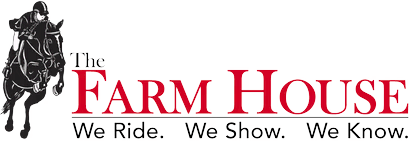
Equestrian Ribbons Of Communication
Michelle DrumThere’s been a lot of talk in forums recently about horses with ribbons in their tail, in their forelock, or attached to their ear bonnet. These small ribbons are a big deal to other riders in a busy schooling area and special attention should be paid to horses wearing them. It should be noted that there is a difference between wearing a ribbon 🎀 and the horse being braided up with festive colored yarn.
Tail and Forelock ribbons are a quick way for the rider to tell others that their horse has special needs while in traffic or around other horses. The color of the ribbon is significant in the fact that it tells you what that horse and rider need from other equestrians around them. Below I’ve listed out the most commonly used ribbons and what each one means.
Red Tail Ribbon – Horse Kicks
Red Forelock/Ear Bonnet Ribbon – Horse feels stressed/claustrophobic in oncoming traffic.
Green: The horse is young and green, possibly first outing, potentially spooky or unpredictable
Blue: This horse is a stallion and may get aggressive around other horses in close proximity.
Generally speaking, if a horse is wearing a ribbon, the rider is warning others in the area that their horse requires extra space to keep everyone safe. A see many riders of late misinterpret the red forelock ribbon for horses stressed in oncoming traffic.
Once you’ve ridden a horse who gets nervous/claustrophobic with oncoming traffic you won’t soon forget it, as it can be hard to manage. These horses get very upset when other horses in a busy schooling area come at them head on especially at speed. My mare would stop dead in her tracks, start backing up as quickly as possible and if I couldn’t turn her in time she would occasionally pop off her front end and spin trying to get away.
The red ribbon on the forelock/ear bonnet lets everyone know to give this horse some extra space, be aware of your surroundings and make sure to avoid coming straight at the horse head on, especially at speed.
Red Tail ribbons mean that this horse will kick if you get too close or let your horse run up behind it while schooling.
Green Tail ribbons usually mean this is a young or inexperienced horse, and it may be their first time off the farm. Give lots of space, and move slowly when passing. The most common thing at a horse show can become very scary to a green horse.
Blue Ribbons mean this is a stallion, he may be easily distracted or have aggressive tendencies around other horses. Give him extra room so he can focus on his rider, and be careful not to stop short in front of him or run up behind him.
As noted, these are the most frequently used ribbons to let riders know when a horse needs extra space. There are others used both in the United States and abroad that mean a variety of things like white for a sale horse, pink for a mare in heat, some countries use yellow for stallions etc.
In my experience red, blue and green are the ones riders should learn before attending an event where other horses will be present. These ribbons cross multiple disciplines and can be found just about anywhere a group of horses may congregate be it a horse show, fox hunt, hunter pace or trail ride.

2 comments
I knew of the red tail thing the DAY OF my first show. i needed to know the forelock and mane apparently but i put red in my mares tail just to be sure. she gets VERY cagey when horses come around her, head on, from behind it dosent matter. shes a retired race horse with not much time off the track to understand horses arent competition or threats. shes never kicked before but i didnt want an accident if she felt cornered.
Thanks great article. I new red for tail but not the others. My mate would get very nervous with head on traffic. My husband said they came up with that for my mare. Seeing as it was 20 years ago. We would be asked to warm up alone. Now it’s getting the riders to pay attention. That’s the real problem.